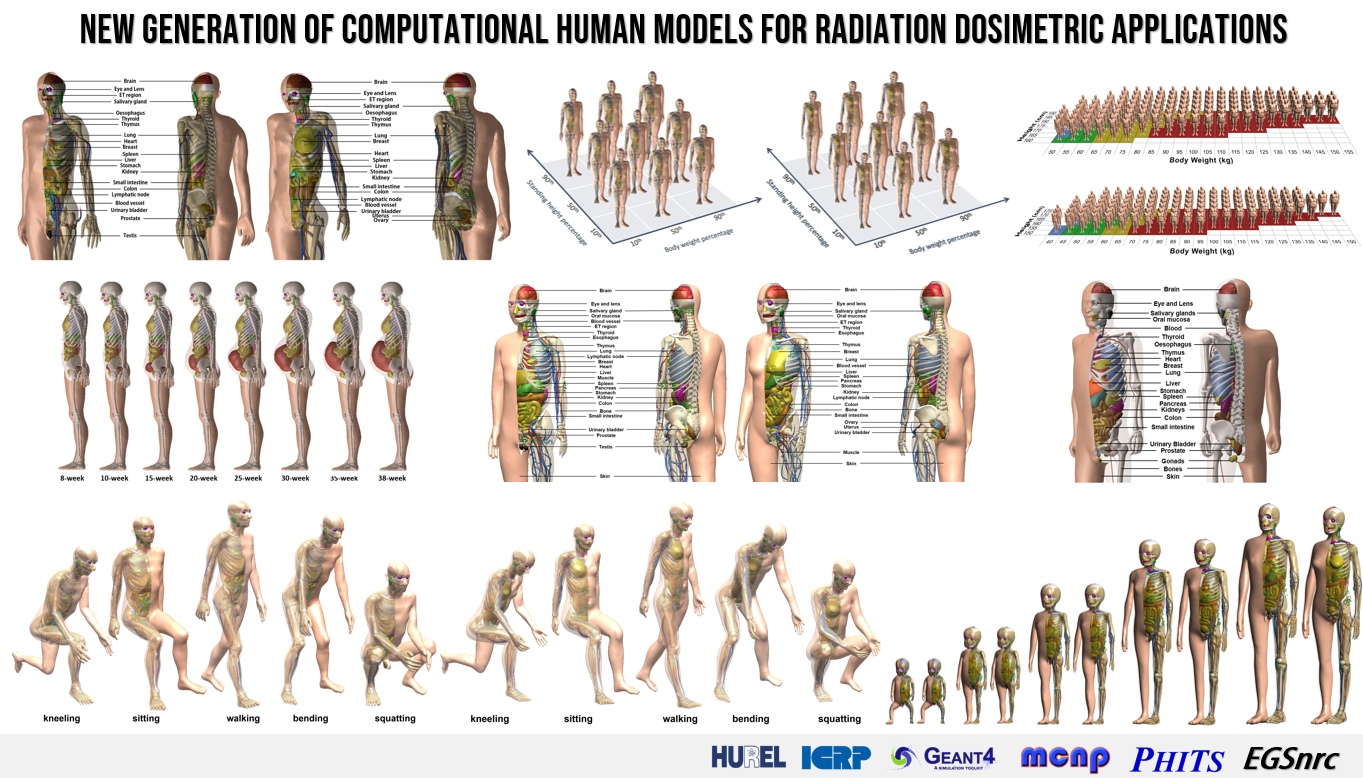HomeMESH-PHANTOM2024-10-04T11:05:46+00:00

A computational human phantom is a model of human body including the inner organs and tissues for the computerized analysis. In the field of radiation dosimetry, the computational phantom is used to evaluate the energy deposition in the organs and tissues from the external and internal exposures to ionizing radiations. The phantom was developed in various geometry format to represent anatomical structure of the human body more realistically (i.e., stylized to voxel phantom, voxel to boundary representation (NURBS and polygonal-mesh) phantom, and finally boundary representation to tetrahedral-mesh phantom). The tetrahedral-mesh phantom, referred to as the mesh phantom, is considered as the most advanced type of computational phantom, overcoming the limitations of the existing phantoms. Unlike the boundary representation phantom, the mesh phantom can be directly implemented in the general-purpose Monte Carlo radiation transport codes such as Geant4, MCNP6, PHITS and EGSnrc.
This website (https://mesh-phantom.com) provides: (1) the information on the mesh phantoms developed by HUREL; (2) the way of requesting the mesh phantoms; (3) the input files of the Geant4, MCNP6, PHITS, and EGSnrc codes; and (4) the discussion forum for the mesh phantoms.


